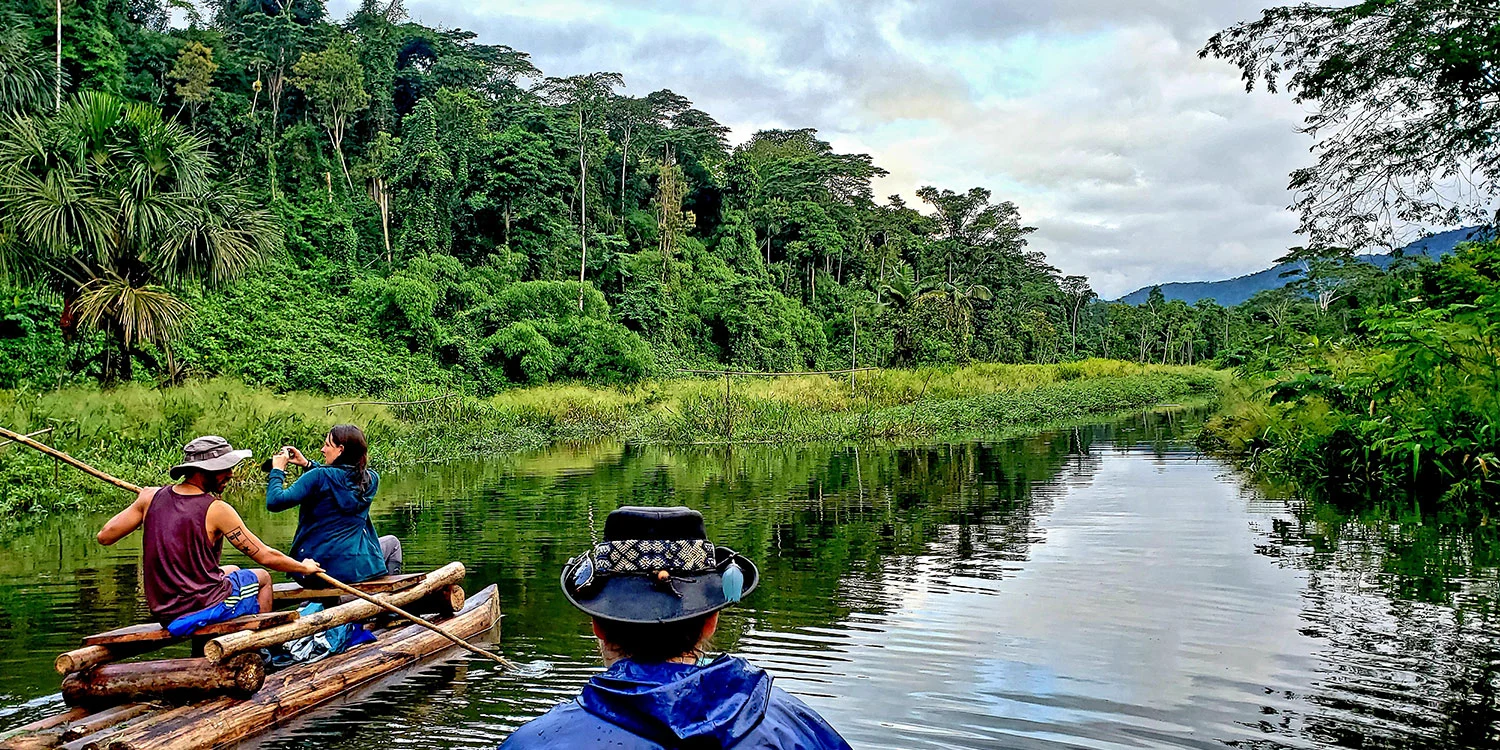Manu National Park in February offers the perfect setting for a wildlife photography tour, with its dense vegetation, low clouds, exotic birds, stealthy jaguars, capybaras, giant otters, curious tapirs, the majestic Amazonian condor, and many other species. A true paradise for nature lovers, wildlife enthusiasts, and photographers, making it an unmissable destination for those seeking to capture the essence of wildlife in its natural habitat.
Manu National Park, located between Cusco and Madre de Dios, is a UNESCO World Heritage Site and one of the areas with the greatest biodiversity on the planet. In February, which falls within the rainy season, the region becomes very humid: frequent rainfall (over 500 mm during the month) intensifies the lush greenery of the jungle. Temperatures range from 23°C to 28°C (73°F to 82°F), but the high humidity makes it feel even warmer. Despite the rain, many adventurous travelers enjoy photography and birdwatching tours in Manu in February, taking advantage of a more active and less crowded rainforest.
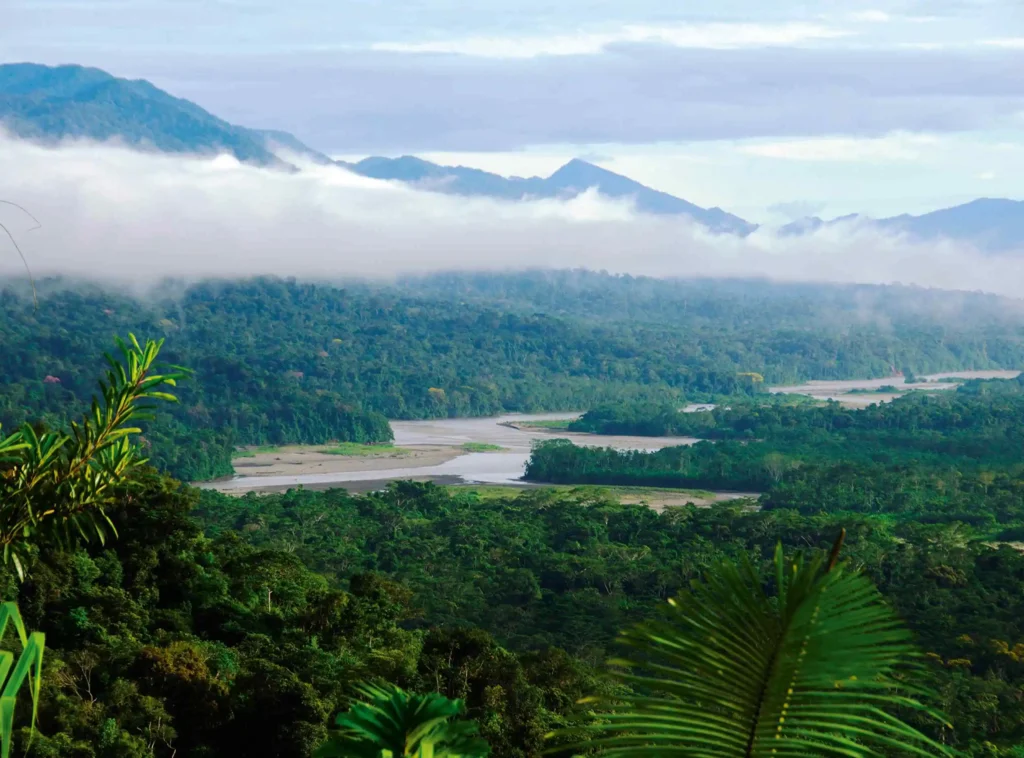
Weather in Manu National Park in February
The weather in Manu National Park in February is part of the rainy season. Rainfall exceeds 500 mm and occurs on more than 20 days, making the jungle wet and warm. Rain showers are intense, followed by brief sunny moments, creating a misty atmosphere.
Despite the rain, local guides are well-prepared to adapt to changing conditions. While itineraries may be adjusted, this time of year offers a more thrilling experience. However, between February and March, access by land or air can be more difficult, leading some companies to temporarily suspend tours.
- Average temperature: Not specified, but warm and humid.
- Rainfall: Over 500 mm on more than 20 days.
- General conditions: Warm and misty climate, slippery trails, more exciting river cruises, challenging access by land or air.
- Recommendations: Bring waterproof gear (jackets, pants, non-slip boots), flexible itinerary, and alternative plans.
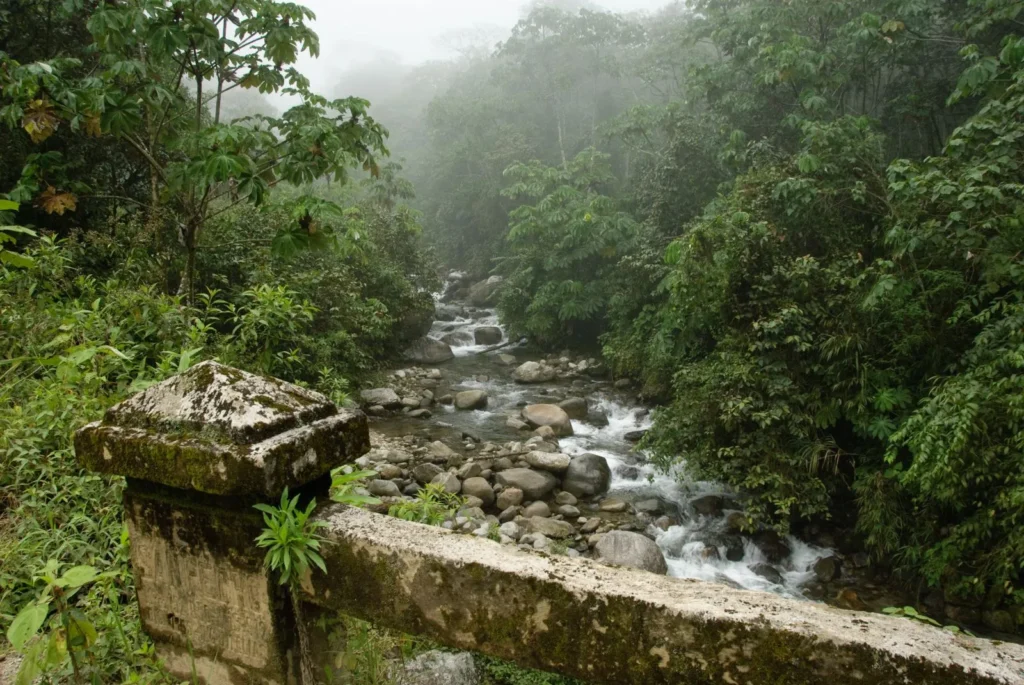
Wildlife and Photography Tours in Manu National Park
The incredible bird diversity in Manu includes species such as the king vulture, harpy eagle, toucans, and quetzals. Although February is rainy, this month is ideal for wildlife watching, as animals are often more active in the morning and after the rain. During this time, you may spot exotic birds, mammals like capybaras and tapirs, and amphibians like frogs. It’s common to find capybaras near rivers, see howler monkeys in the treetops, or even small nocturnal mammals during rainy night hikes.
- Nature photography tours cross various ecosystems of Manu, such as the cloud forest and the lowland rainforest.
- Tours include stops at wildlife viewing points.
- Key highlights: The macaw and tapir clay licks, where hundreds of these animals gather.
- Target species: Toucans, red-and-green macaws, owls, quetzals, and the emperor tamarin.
- In February, the wet jungle appears especially vibrant thanks to the rain, which enhances the colors of the birds and vegetation, offering a major advantage for photographers.
- The macaw clay licks are very popular spots, where dozens of multicolored macaws fly together against the jungle’s green backdrop.
- The abundant wildlife allows for guided excursions focused on photography and birdwatching, even in the rain.
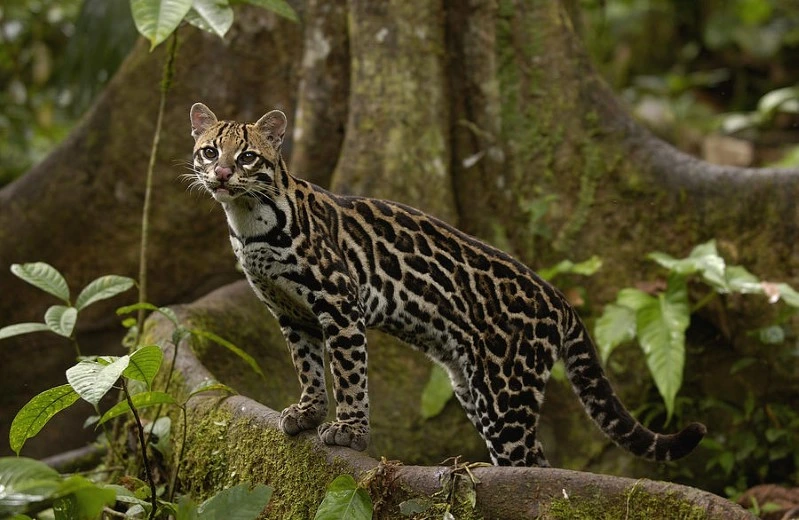
Advantages of Visiting the Manu National Park Biosphere in February
- Increased wildlife activity: More sightings of exotic birds and mammals. Unique opportunities for photos of capybaras, tapirs, and monkeys.
- Fewer tourists: Low season, with fewer crowds and more direct contact with nature.
- Lush landscapes: Intensely green vegetation, fuller waterfalls, and a truly authentic jungle atmosphere.
- Activities: Rising river levels, perfect for boat tours. Night hikes offer unique encounters with active wildlife.
Disadvantages of Visiting the Manu National Park Biosphere in February
- Unpredictable weather: Heavy and sudden rainfalls can complicate tour planning.
- Slippery trails: Mud and puddles make hiking difficult; non-slip boots are necessary to avoid slipping.
- Limited access: Some areas may become inaccessible due to heavy rains or landslides. Still, agencies like Peru Jungle Trips offer tours, as their guides are well-prepared to ensure visitor safety and experience.
- Mosquitoes and heat: High presence of insects and elevated heat index. It’s essential to use repellent and wear proper clothing.
- Challenging logistics: Requires experienced guides, as weather changes may force route and schedule modifications.

Useful Tips for Traveling in February
- Reliable agency: Book your tour with trustworthy operators with years of experience, such as Peru Jungle Trips. A good guide knows alternative routes and uses effective safety measures.
- Plan ahead: Reserve your flights, transfers, and lodging in advance. Be flexible with unexpected weather changes.
- Waterproof gear: Bring a rain poncho or waterproof jacket, quick-dry pants, and water-resistant trekking boots. Protect your devices with waterproof cases.
- Personal protection: Use insect repellent, sunscreen, a hat, and sunglasses. Carry a basic first aid kit and make sure your vaccinations are up to date.
- Lighting and extras: Bring a headlamp, binoculars, extra batteries, and plenty of storage space for photos.
- Respect the rainforest: Follow your guide’s instructions, stay on the trails, don’t litter, and respect local communities.
Frequently Asked Questions About Manu National Park in February
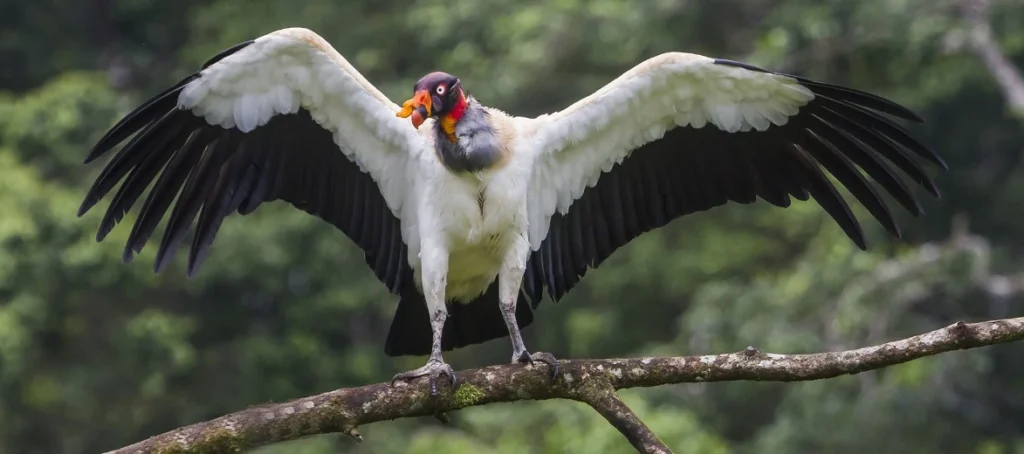
1. Is it safe to visit Manu National Park in February?
Yes, as long as you are well-prepared and accompanied by an experienced guide. Although the rain can be heavy, local tour operators are used to it and adapt itineraries safely.
2. What animals or birds can I see during tours to Manu National Park in February?
Many. February is ideal for spotting tropical birds like macaws, toucans, owls, and the harpy eagle, as well as mammals such as capybaras, howler monkeys, tapirs, and otters. You may also see amphibians and reptiles.
3. What clothes and gear should I bring to Manu National Park in February?
Bring waterproof and quick-dry clothing, non-slip trekking boots, a hat or cap, insect repellent, sunscreen, a flashlight, and a backpack with a rain cover. Don’t forget your protected camera.
4. Do I need an authorized guide to visit Manu National Park?
Yes, it is mandatory and essential. Authorized guides know the park’s biodiversity, implement safety measures, and enhance the experience of wildlife watching and photography.
5. How does the rain affect tours in Manu National Park?
Tours continue, but are adjusted depending on the weather. Hikes may be shortened, and boat rides prioritized. Rain does not cancel the tour, but it requires adaptation and patience.
6. Is it worth traveling to Manu National Park in February?
Yes, if you are looking for adventure and active wildlife. You’ll see a vibrant, wild rainforest with few tourists, although it demands tolerance to rain and variable conditions. The experience can be authentic and unforgettable.

Manu National Park in February is an ideal destination for photographers and nature lovers. Despite the rain, the jungle becomes more vibrant, offering a great diversity of wildlife, including exotic birds and mammals. With no crowds, visitors can enjoy an authentic experience, although weather conditions and access may be challenging. Contact us and book your adventure to Manu National Park.
Recommended Tours to Manu National Park:
- Manu National Park Tour (3 Days)
- Manu Jungle Tour (4 Days)
- Manu National Reserve (5 Days)
- Manu Reserved Zone (6 Days)
- Manu Amazon Rainforest Expeditions (7 Days)
Discover Manu National Park in January: Climate, Advantages, and Disadvantages to be well prepared.
➜ Trip to Manu National Park in January: Essential Guide
Explore Manu National Park in March: Climate, Recommendations, Advantages, and Disadvantages

